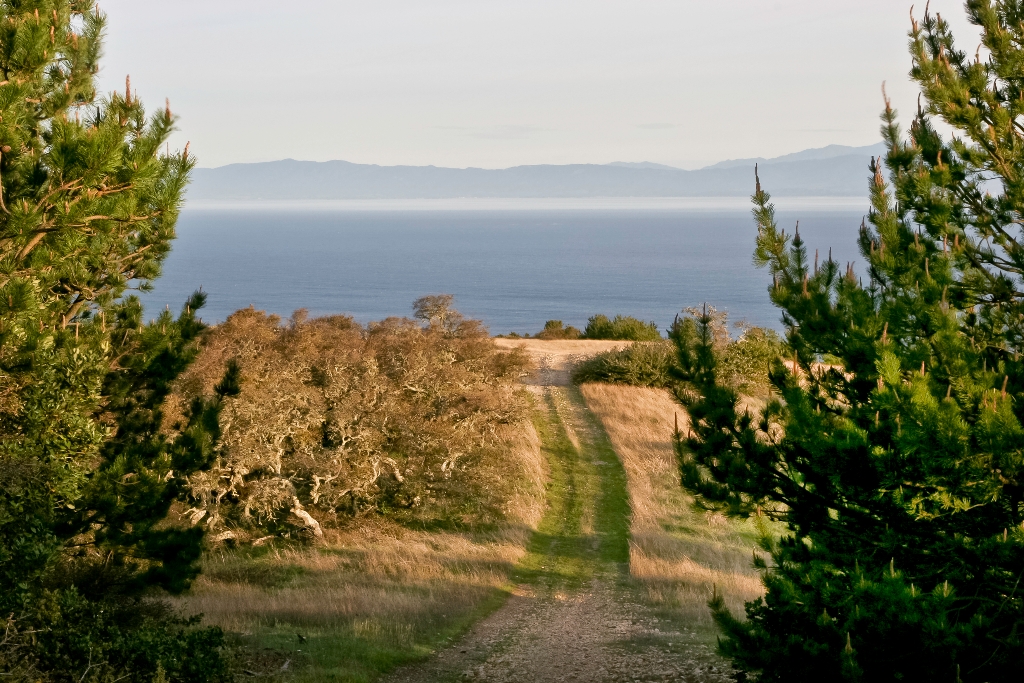
This north-facing slope is home to both the Santa Cruz Island pine ( Pinus muricata forma remorata ) and the bishop pine ( Pinus muricata ). They can be told apart by their cones. The bishop pine has prickly, asymmetric cones, while the Santa Cruz Island pine have smooth, symmetrical cones. However, sometimes you can see some characteristics of both species on one tree.
For many years, new pines were unable to gain a foothold because of overgrazing by sheep. With the removal of nonnative sheep by 2001 and the nonnative pigs by 2007, there has been significant regeneration of this pine forest.
Other trees that are occasionally interspersed within this pine community include: island ironwood ( Lynothamnus floribundus ssp. aspleniifolius ), coast live oak ( Quercus agrifolia ), and island oak ( Q. tomentella ). The Bishop pine community also includes many commonly associated understory species such as chamise, coyote brush, globe lantern, toyon, smooth mouse ears, island deerweed, island monkeyflower, chaparral current, poison oak, canyon sunflower, and the rare island barberry.
Santa Cruz Island pines and bishop pines, like some of the Channel Islands' chaparral species, are adapted to coexist with fire. Mature trees may succumb to a blaze, but the cones they produce typically remain closed until fire opens them and disperses their seeds, allowing stands to quickly regenerate in the nutrient rich soil. Aging and heat exposure may also open the cones occasionally, but without fire regeneration the rate is slow.
Is there something we missed for this itinerary?
Itineraries across USA


















































